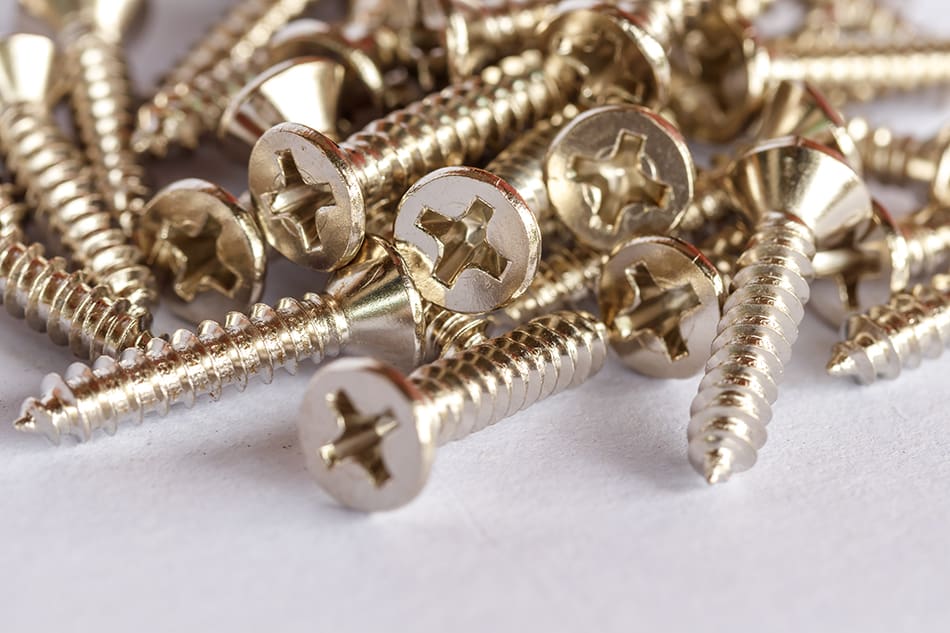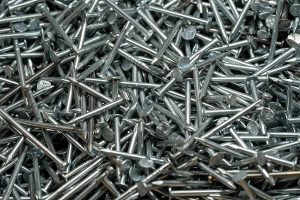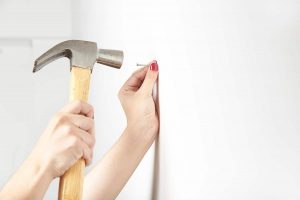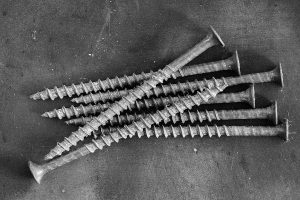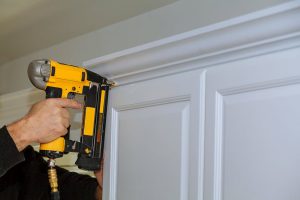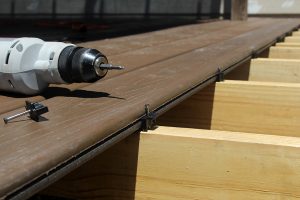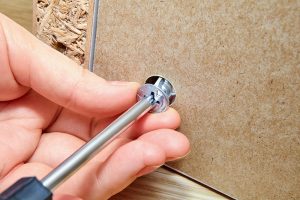Generally made of metal, a screw is a hardware device used to join or affix two or more parts together. When a screw is rotated, its sharp tip pierces the wood or other material. From there, you can secure the screw in place by rotating it using a screwdriver.
Find below a great diagram that identifies the parts of a screw.
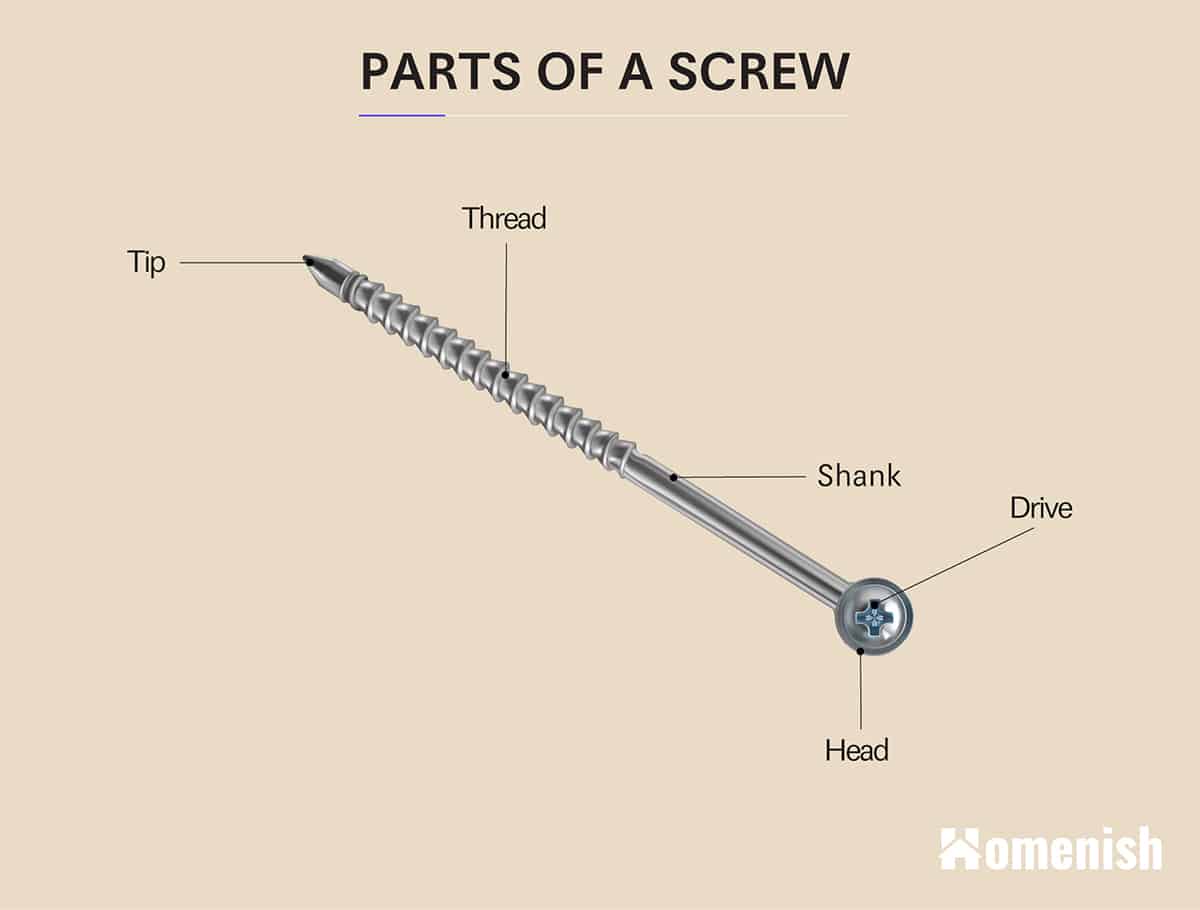
Head
The head is located at the top portion of the screw, and it is wider than the thread and shank. You can loosen or tighten the screw by inserting a screwdriver on its head and rotating it.
Drive
At the center of the screw’s head is the drive. It is the part where you will insert the tip of your screwdriver. From there, you can rotate the screw, so it can pierce through wood or metal.
A screw drive comes in various sizes and shapes. The most common types are Phillips, slotted, pozidriv, and square. A slotted drive has a single line in the middle of its head.
A Phillips drive, on the other hand, has a cross at the center of its head, while a pozidriv has a star at its center. Finally, as its name implies, a square drive has a square in the middle of its head.
Shank
The shank is the part of the screw located underneath the head. It is the long and narrow part of the screw, and it connects the head to the thread. Typically, the shank is the non-threaded portion of the screw’s body.
Thread
The thread is the helical or spiral ridge that runs through the body of the screw. This is the part where the screw gets its grip, allowing it to join two or more parts together.
A screw’s thread can either be partial or fully threaded. A screw with a partial thread has a shank or the area underneath the head that is free of threading. This type of screw is best for alignment and resistance.
For example, you need to hold an object in place, which will require a lot of force. A partially threaded screw can deliver the strength needed to hold the object in place.
As for a fully threaded screw, it has no shank. Instead, the helical ridge runs below the head to the tip. This type of screw is often used for projects that are focused on grip strength. Once you mount a fully threaded screw, it spreads the pressure on its entire length.
Tip
The tip is located at the end of the screw, and it is the part that penetrates first through the wood or other material when the screw is being rotated.
As of today, you can choose from a variety of screw tips. The most common screw types are self-drilling and self-piercing. A self-drilling point or tip has a drilling feature that allows it to make a hole on the wood or metal.
A self-piercing tip or point, on the other hand, has a sharp tip that can cut through wood or metal as the screw is driven.
